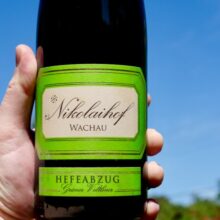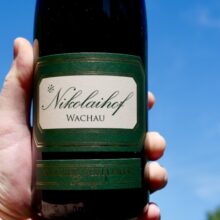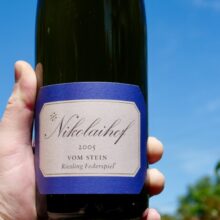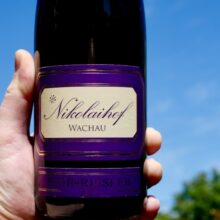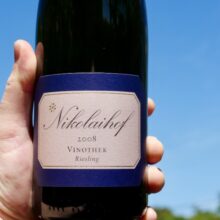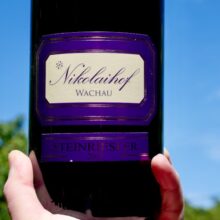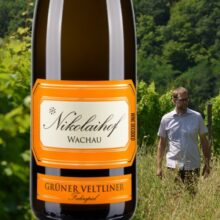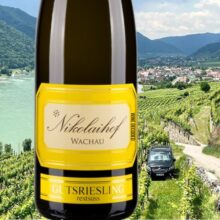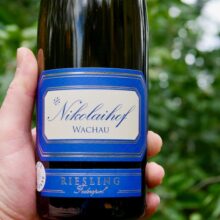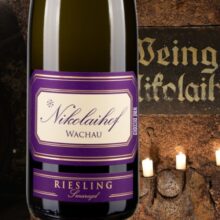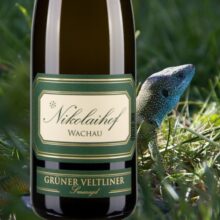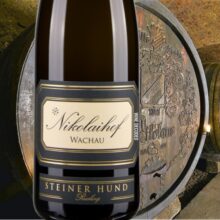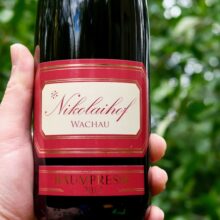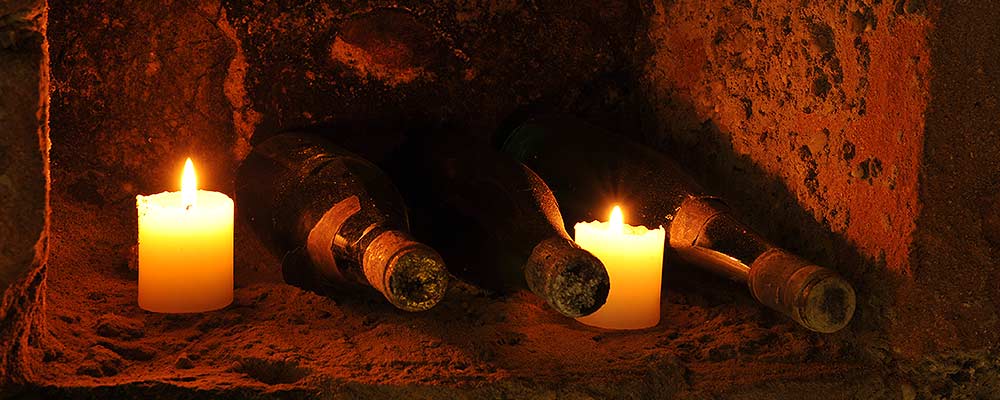
Winery
Nikolaihof
About Weingut Nikolaihof
On the eastern edge of the Wachau valley, there lies Nikolaihof, in the quiet village of Mautern.
In its current manifestation, Nikolaihof is a wine estate, yet it has lived many lives. The wines of the house are a singular experience: the combination of unique Wachau terroirs with ancestral technique blends together in this place to form something at once ancient, yet novel in the contemporary wine world. Decisions here are not dictated by the market or trends.
Nikolaus Saahs (Jnr) runs the Nikolaihof estate on strict biodynamic principles and it is possibly Europe’s first ever biodynamic winery with the practices being used since 1971 (before Nicolas Joly even!). They were certified in the early 1990s.
Away from the vini/viticulture side of things, they also practice what they preach, running their estate as a small bio-farm; growing and making all manner of produce to serve alongside local fare in their weinstub, as well as serving produce from other local likeminded producers.
Nikolaihof is a realm dense with historical memory. These memories and a winemaking ethos built upon tradition provide the backbone for many of the hallmarks of Nikolaihof. Wines are released when they are ready not necessarily when the market wants them. Fermentation and elevage are never rushed or hurried. Harvests are unique in the vineyards of Nikolaihof. Due to the strict use of biodynamic preparations and vineyard management, the estate is often able to achieve grape ripeness well before their more conventional-farming neighbors. The rhythms and cycles of Nikolaihof are all their own. They are continuing traditions and living in a history with deeper roots than almost any estate in Europe.
Nikolaihof is the oldest wine estate in Austria, for over two millennia, the grounds of Nikolaihof have been revered for both vinous pursuits and the mystical. Nikolaus Saahs, the current owner and winemaker at Nikolaihof, took over production from his parents in 2005. At the helm of this famed house, he keeps the long view in mind. Which course this makes sense when one considers the scale of history the estate encompasses. The Nikolaihof monastery was founded in 985 AD by the diocese of Passau. Its specific location was chosen to capitalize on pre-existing Celtic mystical reverence for the site dating back to the Roman era as well as the prestigious vineyards nearby. The wines of Nikolaihof are still barrel-aged in the ancient cellar built by the Romans in the 63BC. The current buildings stand on the original foundations and the barrel cellar itself is constructed in the Roman crypt. It’s incredible!
Winemaking on the site can be traced back to the Celts, with the first documented reference to wine from 470 AD.
Nikolaus’ mother, Christine, was a student of Rudolph Steiner’s School of Anthroposophy after being acquainted with his teaching in medical school. Christine became an important advocate for biodynamic agriculture in Austria and Europe. Nikolaihof was one of the first biodynamic wineries in Europe in 1971. The results speak for themselves: year to year Nicholas is able to harvest ripe, healthy grapes even in years where others may struggle. And yet the wines of Nikolaihof show remarkable balance. The category of “Smaragd” designates the ripest, high-alcohol wines of the valley with at least 12.5% ABV. Sometimes this leads to over-blown or flabby wines. Yet Nikolaihof’s Smaragd wines always fall closer to the 12.5% line representing elegant, balanced examples of the category.
“Organic, biodynamic winery whose wines express the earth, the whole earth and nothing but the earth. Nikolaihof’s wines are often incredibly thick, dense and uncompromisingly stony in character… JUST GIVE THESE WINES TIME. They’ll do everything for you that great wine can do, if you are patient. Early on you’ll easily see their sheer intensity, but specific details can be lost in a monolith of concentration, an opacity that can be perplexing if you don’t know what’s ahead. Thus detailed tasting notes are difficult if you feel the need to delineate skeins of flavors with sequences of associations. Here you just stand on the prow and feel the wind and look at the swollen waves of vinosity and hope you aren’t swept overboard. And hope you are. . . .”
Michael Skurnik
“A remarkable shelf life is a general feature of the wines of Nikolaihof, which tend to develop very slowly – what factors are responsible for the degree, we can only guess: an essential part of the reason is the decades of biodynamic management according to Nikolaus Saahs. However, you can also attribute it to the slow fermentation with natural yeasts and the customary maceration times, and also the fact that, while in principle the work is reductive, the maturation in large old oak barrels takes place in the perfect cellar environment. The shelf-life of the wines does not rely on the alcohol because even in the hot, ripe years the Smaragds do not significantly exceed 13 percent.”
Vinaria
In the Vineyard
Nikolaihof’s holdings are some of the farthest east in the Wachau near the village of Mautern on the Danube’s south bank. In fact one of Nikolaihof’s most ethereal wines is sourced from Steiner Hund, a vineyard just across the border in the Kremstal. These are also some of the oldest known vineyards in Europe with sites such as “im Weingebirge” being mentioned as far back as 470AD. Whether it’s Nikolaus biodynamic know-how, his focus on ancestral vinification techniques, or the quality of his terroir, the resulting wines are wildly unique and joyful.
Today the vineyard area totals 22 hectares, predominantly in the Wachau with a small area in neighbouring Kremstal. The soils are decomposed granite, gneiss and mica. Many of the sites across the domaine have old vines with the average age of over 50 years.
Nikolaihof has maintained a regime of biodynamic intervention and cultivation for over 40 years. Under Nikolaus this tradition continues. No pesticides or herbicides are used in their vineyards instead stinging nettles, manure, valerian tea and other traditional biodynamic preparations make up Nikolaihof’s inventory for pest management and overall vineyard health.
Top Sites
Im Weingebirge: The oldest named vineyard site in Europe, the soil is varied with loess on the higher terraces and deep topsoil over primary rock lower down the slope
Vom Stein: Vom Stein is a sub-site of the Silberbichel vineyard. The soils are gneiss with mica inclusions; there is a layer of loess and topsoil
Steiner Hund: Primary rock with river pebbles, very stony, just outside of the Wachau borders hence the labeling of “Reserve” and not Smaragd
Soil Types: Primary rock topped with humus or gravel, and eroded primary rock
Grape Varieties: 55% Riesling, 35% Grüner Veltliner, 10% Weissburgunder, Malvasier, Neuburger, and Chardonnay
In the Winery
Fermentations at Nikolaihof are long, slow, and spontaneous. Elevage happens in large, 40-year-old barrels or stainless steel with full lees contact until the wines are bottled. These bottlings could be many years from harvest. The Vinothek Riesling Severin Fass matures for 25 years in large oak barrels before bottling! Consider Nikolaihof’s lauded 1995 Vinothek Riesling: the first Austrian white wine to receive 100 points from Wine Advocate, it was bottled 17 years after harvest and released to the market in 2012. This wine sold out upon release but the 1997 Vinothek is available now and has received its share of acclaim (Advocate & Vinous Media both gave it 97 points.)
The result is some of the greatest white wines I have been privileged to taste. Delicate with strong mineral accents and deep concentration, their low alcohol and crystalline purity is the antithesis of the late picked, high extract styles that are famous from the Wachau. These are wines with incredible energy that will demand your time.
The Wachau Classification
The Steinfeder, Federspiel and Smaragd classifications are inseparably linked to the wines of the Wachau. The wines are always dry, made without any noticeable wood influence, while any form of sugar addition is not permitted. The categories are defined according to the level of maturity of the grapes.
Nikolaihof whilst using the classification makes many wines that although labeled within one classification sit above that classification in terms of real quality and pleasure in the glass. Nikolaihof achieves phenological, flavour and tannin, ripeness and sugar levels lower than many in the Wachau. The fruit is ripe, yet it is achieved at lower alcohol and with higher natural acidity than many other producers. This might sound like a technicality, the impact in the glass is significant. It’s only possible to pick ripe fruit at this alcohol when you have old, balanced vines that have seen attention to detail not just across a year but across decades. Such intensity is typically seen at much higher alcohol in Austria. Achieving flavour and phenolic ripeness at lower alcohol levels has the benefit of giving a wine freshness, energy, and a weightlessness, feather light feel not otherwise possible. I saw this time and time again making the wine at Yarra Yering. Our vintage would be finished before many were even halfway through picking!
STEINFEDER ®
The “Steinfeder” is an indigenous feather grass from the Wachau and the name for the lightest of the three Wachau wine categories. It was the first trademark introduced by Vinea Wachau in 1984. The maximum alcohol content is 11.5 % by volume. The style is lively and delicate, with refreshing fruit in the foreground.
FEDERSPIEL®
A “Federspiel” is a prey dummy used as a lure in falconry, a sport once popular in the Wachau. These wines have between 11.5% and 12.5% alcohol, which puts them at the golden mean of the Wachau’s stylistic spectrum. These wines are often labelled with their vineyard of origin. Federspiels combine vitality and character and their delicate aroma components make them ideal food matches.
SMARAGD ®
The Wachau vineyard terraces and their dry stone walls offer a natural habitat for numerous plants and animals; among them the local green “Smaragd” lizard that lends its name to the best known of the Vinea categories. The grapes for the Smaragd wines, which must have a minimum of 12.5% alcohol by volume, ripen in the best vineyard sites of the Wachau. They are harvested late and are true representatives of their terroir. The wines are concentrated and powerful, complex and very long-lived.
I can’t recall the connection between this lizard and the Smaragd classification. You’ll see it on some labels. The pic of this scaly friend was taken in Nikolaihof’s vineyards.
Where in the World is Nikolaihof?
Weingut Nikolaihof is based in the eastern extremes of the Wachau Valley with additional holdings just across the border in Kremstal.
